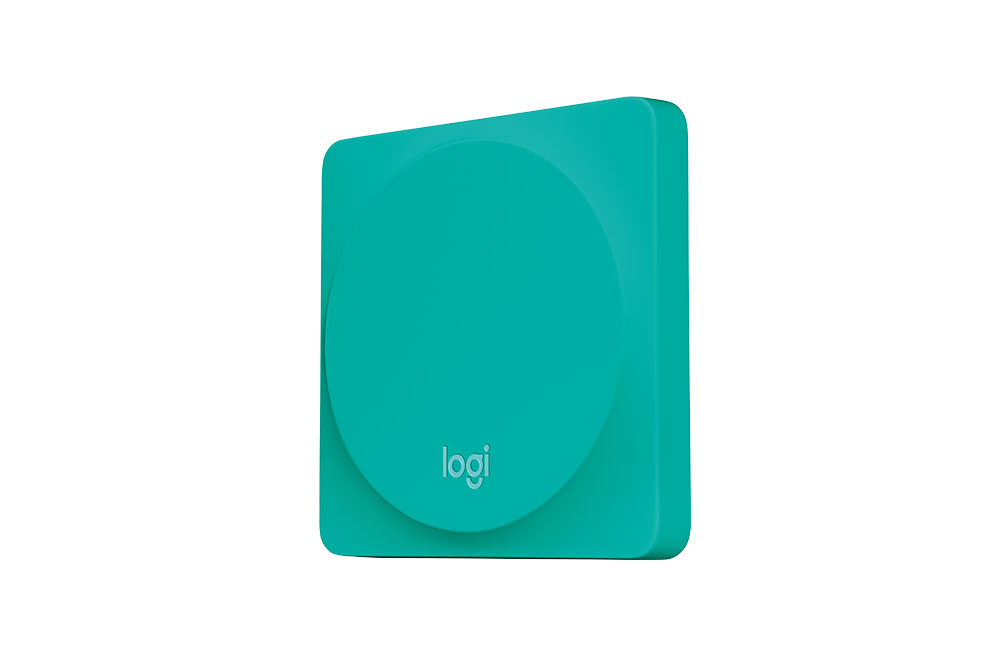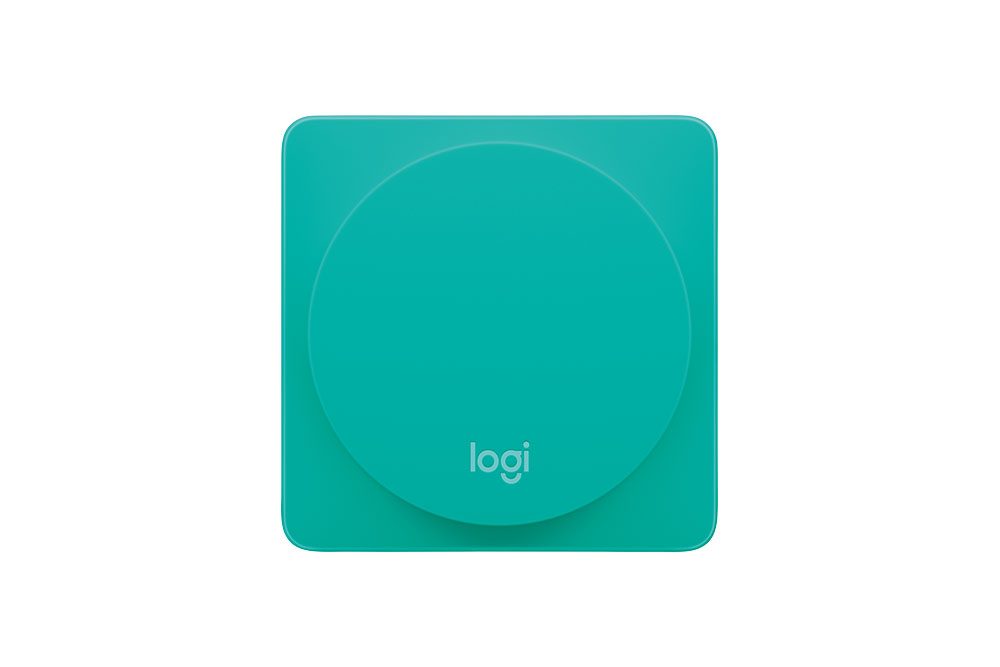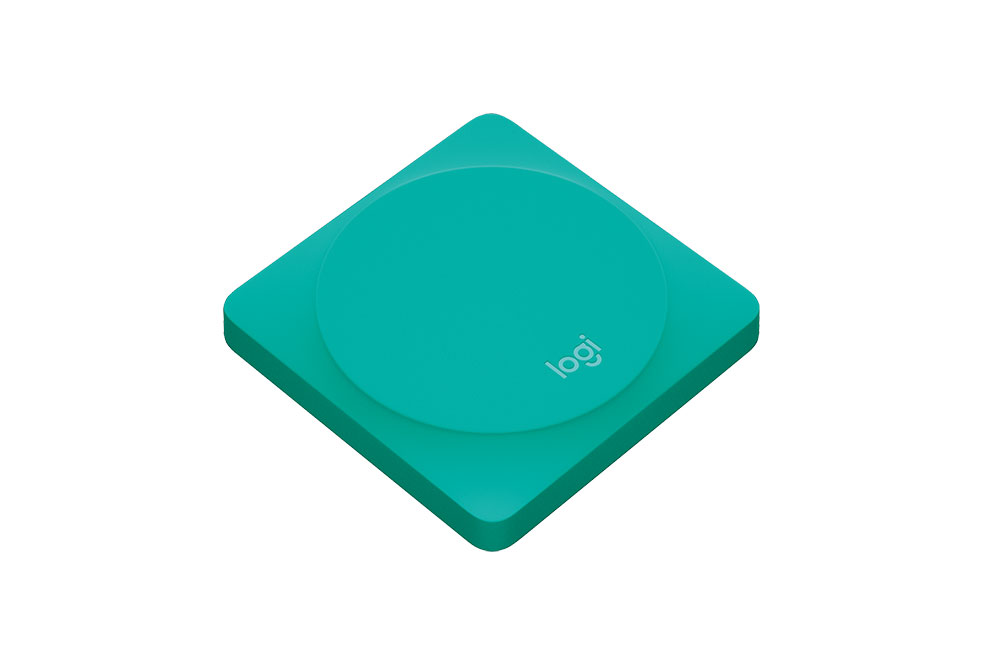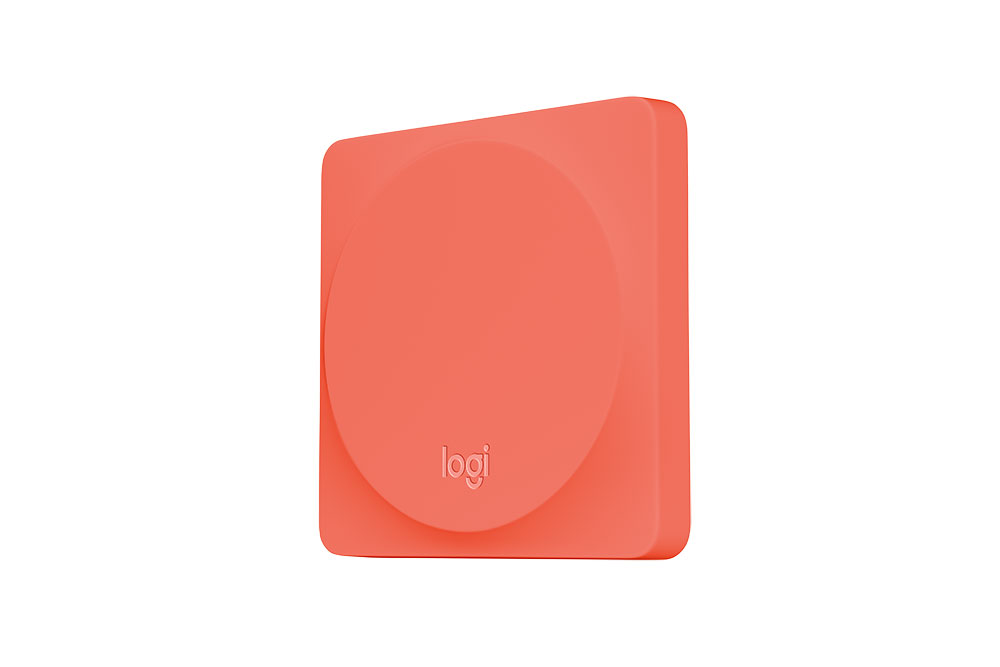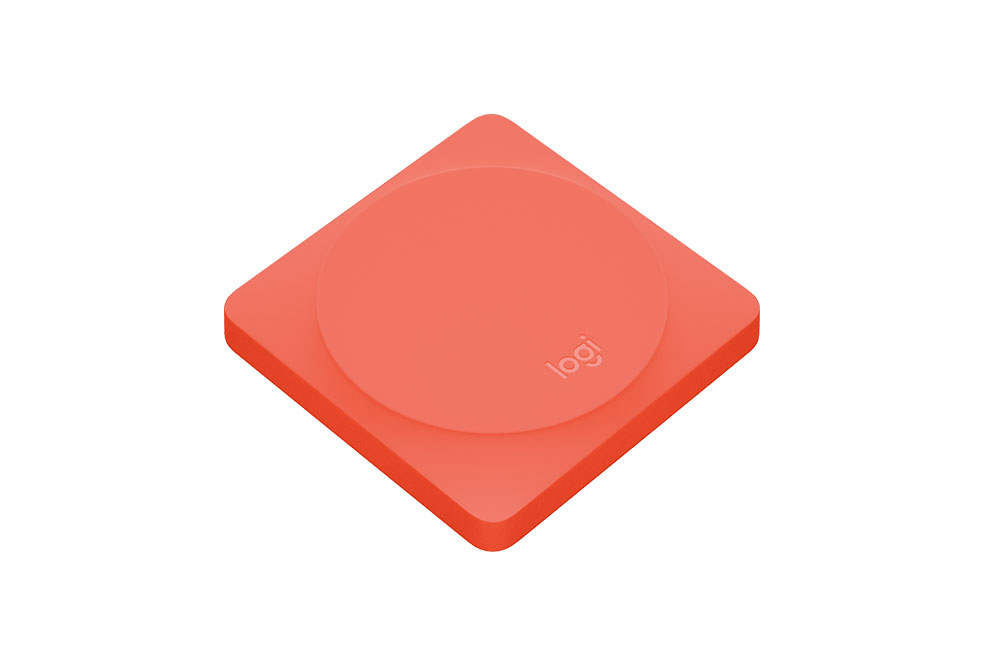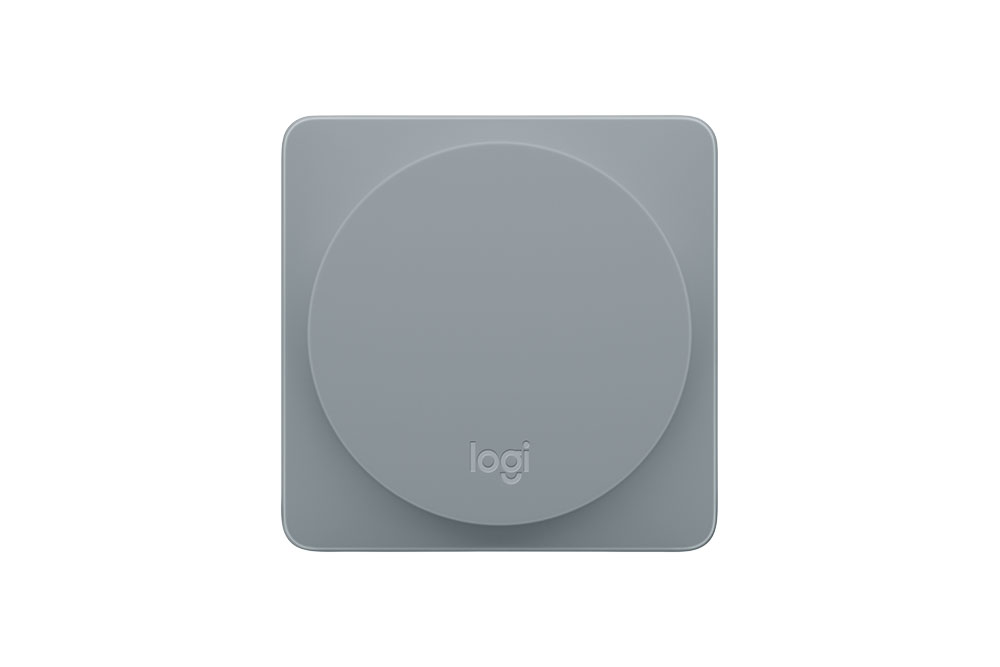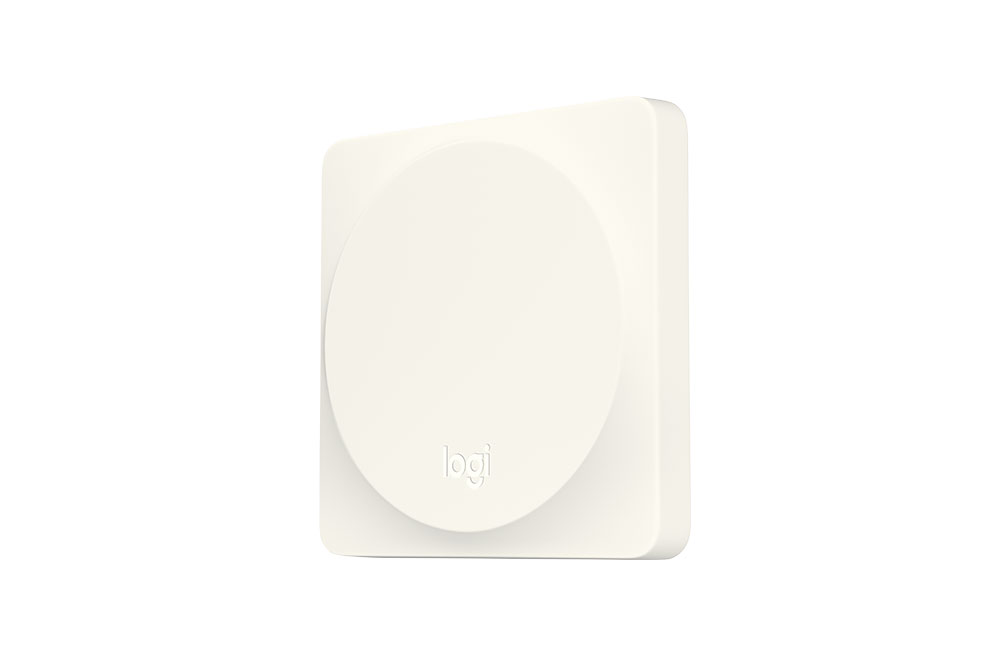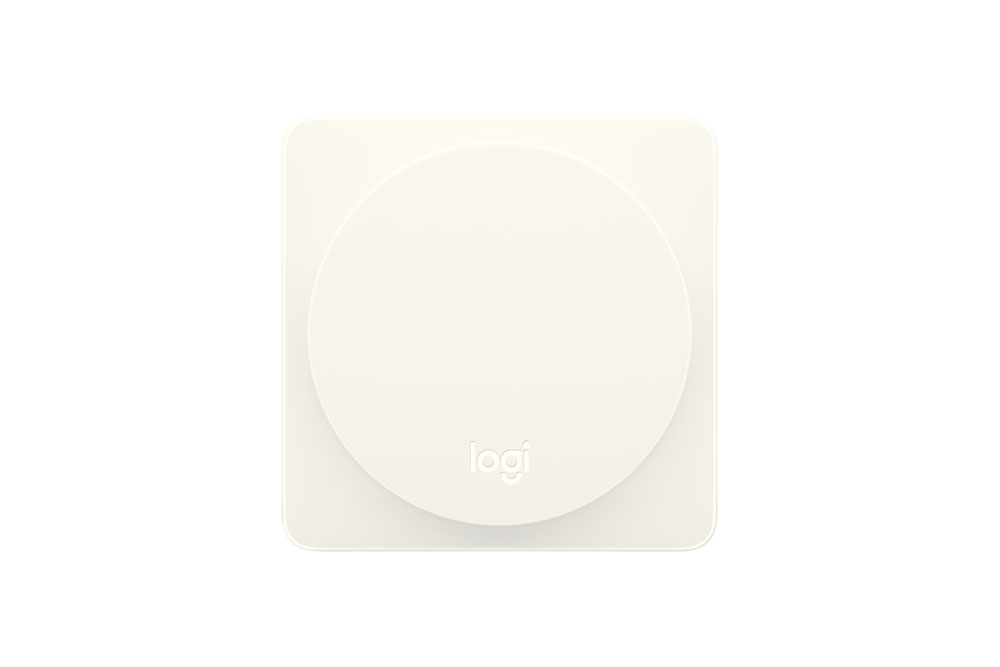Need a little excitement in your automated life? Or maybe convoluted smart home apps have got you down. Well, there’s a physically depressible Bluetooth button for that, and it’s called the Pop. The brainchild of Logitech, it accomplishes exactly one thing: Whatever routine, device, or task you assign to it.
The Pop is a versatile little gadget. Thanks to a flat rear cover, you can affix or adhere the spring-mounted, internet-connected button to just about anything that’s sufficiently adhesive. And it’s not quite as binary as you might expect: single presses trigger routines, of course, but so can two quick taps in rapid succession and a sustained downward press. Each button press can be programmed with a different action: double pressing a Pop in your living room could dim the lights and flip on a projector for an impromptu movie, while a long tap could return things to normal.
The goal with Pop, Logitech’s Senior Director of Home Control Neil Raggio told TechCrunch, is to distill home control to its most schematically basic. That may sound odd for a company that’s made its name on remotes packed to the brim with buttons and switches, but Raggio said that the Pop’s core purpose — tying multiple devices to a single point of control — perfectly encapsulated the company’s mission. “You still want to be simple, you still want to be capable,” he said. “And so we landed on three gestures, as something from a mental model that would be easy enough that a user would know those gestures.”
The Pop’s smartphone app for Android and iOS follows that vein of simplicity. Setup, which leans heavily on drag-and-drop configuration, is a breeze. Much like smart services like IFTTT, you create tie “recipes” that can then be tied to Pop input. Smart devices can live in single flow, and elements from activation order to delay can be tweaked, customized, and tuned to your heart’s content.
The Pop works with just about every product that Logitech’s Harmony remote platform supports: It can toggle wirelessly connected Sonos speakers on and off, flip Philips Hue overheads to a certain color, and open and close Lutron window drapes. And that’s just the tip of the iceberg — hardware on popular platforms like WeMo, SmartThings, and Insteon platforms are also compatible. And better still, the Pop works in tandem with Logitech’s internet-connected Harmony remotes, if you happen to have one or two lying around. You can program a Pop to switch off your television with a tap, for example, or tune in to a certain cable channel with a double press.
Logitech’s Pop begins shipping in the U.S. in August, and will come in two retail configurations: a single button for $40, and a two-button starter pack with a plug-in bridge for $100. It comes in four colors: teal, orange, white, and grey.

